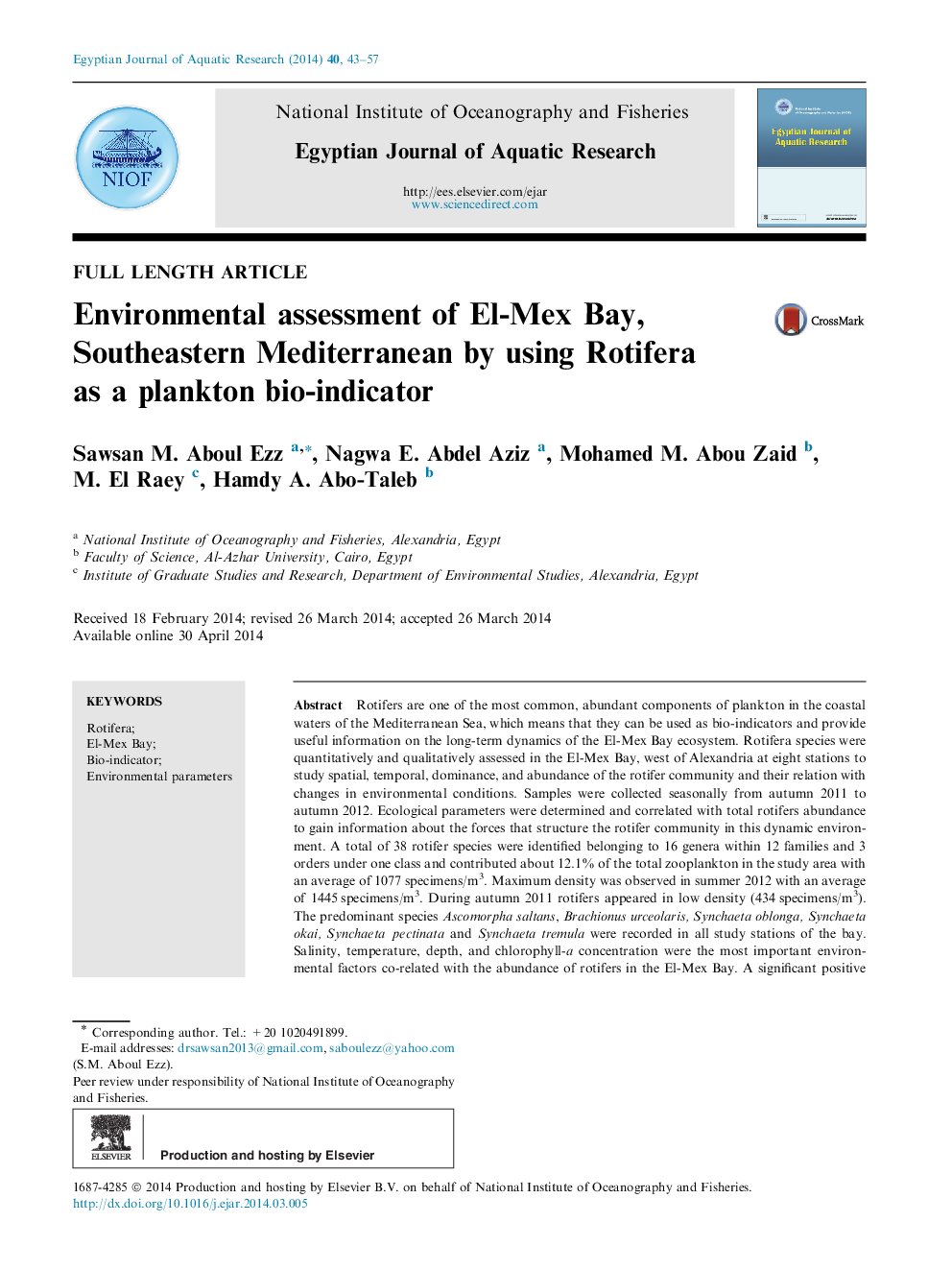| Article ID | Journal | Published Year | Pages | File Type |
|---|---|---|---|---|
| 4493206 | The Egyptian Journal of Aquatic Research | 2014 | 15 Pages |
Rotifers are one of the most common, abundant components of plankton in the coastal waters of the Mediterranean Sea, which means that they can be used as bio-indicators and provide useful information on the long-term dynamics of the El-Mex Bay ecosystem. Rotifera species were quantitatively and qualitatively assessed in the El-Mex Bay, west of Alexandria at eight stations to study spatial, temporal, dominance, and abundance of the rotifer community and their relation with changes in environmental conditions. Samples were collected seasonally from autumn 2011 to autumn 2012. Ecological parameters were determined and correlated with total rotifers abundance to gain information about the forces that structure the rotifer community in this dynamic environment. A total of 38 rotifer species were identified belonging to 16 genera within 12 families and 3 orders under one class and contributed about 12.1% of the total zooplankton in the study area with an average of 1077 specimens/m3. Maximum density was observed in summer 2012 with an average of 1445 specimens/m3. During autumn 2011 rotifers appeared in low density (434 specimens/m3). The predominant species Ascomorpha saltans, Brachionus urceolaris, Synchaeta oblonga, Synchaeta okai, Synchaeta pectinata and Synchaeta tremula were recorded in all study stations of the bay. Salinity, temperature, depth, and chlorophyll-a concentration were the most important environmental factors co-related with the abundance of rotifers in the El-Mex Bay. A significant positive correlation between the total rotifer abundance and chlorophyll-a was observed during winter 2012 and summer 2012 (r = 0.763 and r = 0.694, respectively, at p ⩽ 0.05).
